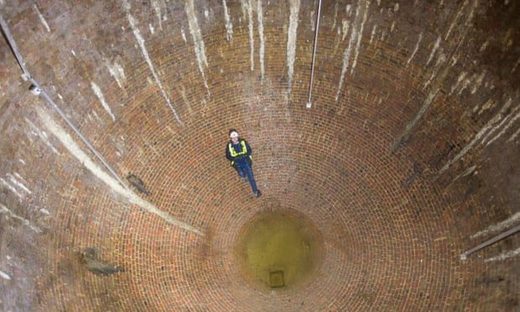Table Of Content
- Icehouse
- Ice Houses
- The Future of Texas Icehouses
- This Old House main menu
- History Blog
- What was the purpose of ice houses in the 19th century?
- Art Deco and dignity inspire multi-hyphenate comedian Katie Cazorla’s new club, the Kookaburra Lounge
- Delivering Blocks of Ice: The Story of the Icemen Through Vintage Photos

A rake with wheels, like the one shown here, will instantly change the exterior temperature of your roof without damaging shingles. If you’re wondering how to fix an ice dam on your roof, here’s how you can prevent them altogether or remove them if they’ve already formed. Though Buss and Toler believe that the entertainment business is all about the fans, it’s also the club’s duty to take care of the comics. With the club’s revival, Buss says live music and other events will play a role in the monthly bookings including jazz, reggae and country nights.
Icehouse
'Ice' book examines the American love of staying cool - Vermont Public
'Ice' book examines the American love of staying cool.
Posted: Thu, 21 Mar 2024 07:00:00 GMT [source]
Ice can be made now with electric refrigerators, food is easily preserved with the cold. Prominent men and women craved it in the summer months, and once a drink was enjoyed cool and not tepid, it was a necessity for those that could afford it. Of course it was only the wealthy who could afford to buy or keep the ice. During the 19th century, ice houses played a significant role in preserving and storing ice for various purposes. These structures were designed to insulate ice, preventing it from melting quickly.
Ice Houses

Additionally, ice houses were also utilized in some cases for medical purposes, where ice would be used to cool down patients or treat certain conditions. The ice used in these houses was often obtained from natural sources such as frozen rivers or lakes. It was carefully cut into blocks, insulated with straw or sawdust, and stacked in the ice house in layers. The interior of the ice house would usually have thick walls and a well-ventilated structure to ensure that the ice remained frozen for as long as possible.
The Future of Texas Icehouses
In their inventory were the necessary utensils for harvesting which included an ice gaff, ice pick, ice tongs and ice saw. People were excited to go to work, to come together as a community of workers, despite the dangers that harvesting presented. Despite cold conditions, accidents and frostbite the harvest was a much looked forward to event. An ice house during the 19th century was a structure used for storing ice in order to preserve it for an extended period of time. The functioning mechanism of an ice house involved several key elements.
But ice harvesting became popular, and with a few tweaks in shipping it and preserving it, people began to ask for it. Competition began to sprout up in Maine along the rivers, and other ice companies emerged as the demand grew. Samatha Williams’s Tearoom in the Gatehouse is brimming with vintage charm and elegant accents. Working with Jacqueline Black and Michelle Porreca, Williams brought in a Chinoiserie wall covering to give the space a garden-like atmosphere. They also installed a grass cloth ceiling treatment and sisal rug to add texture. Designer Mark Hermogeno paid tribute to Silver Queen Susanna Bransford Emery-Holmes in the kitchen, butler’s pantry, family room, powder room, and mudroom.
In the 19th century, ice houses were constructed to preserve ice before the invention of refrigeration. These structures were typically built partially underground to take advantage of the natural insulation provided by the soil. In this article, we will explore the fascinating world of ice houses in the 19th century. Step back in time as we uncover the intricate craftsmanship behind these structures and delve into their vital role in preserving perishable goods. Join me on this journey through history as we unravel the mysteries of the 19th century ice house. During the Civil War, ice deliveries from the North were suspended, so local ice plants began to produce what was called “mechanical” ice.
Americans, who scoffed at the initial idea of an ice trade, instantly became hooked when they were shown the advantages of using it. Fredric Tudor, the “Ice King”, went bankrupt many times, but leaves an enduring legacy. Ventilation was another important aspect of the functioning mechanism. A ventilation system, often in the form of a chimney or air shaft, allowed for the circulation of cool air within the ice house, preventing the buildup of moisture and odors. The ice house was designed to minimize heat exchange from the outside, so it often had a low entrance and a small door or window.
Art Deco and dignity inspire multi-hyphenate comedian Katie Cazorla’s new club, the Kookaburra Lounge
Maria Videla-Juniel turned the primary bath into a sumptuous retreat with hues of soft blue and brown. Thibaut wall coverings and fabrics were used for the walls and windows, and the elegant shagreen-covered vanities are accented with gleaming fixtures by P.E. Videla-Juniel and project manager Cheryl Hardy also installed a striking shower clad in herringbone stone tile. This 1914 map of part of Main Street in Falmouth shows the two ice houses in the photo above. Where did icehouses come from, why have they been so beloved in Texas, and what do they look like today?
Delivering Blocks of Ice: The Story of the Icemen Through Vintage Photos
“Icehouses originally were places with garage doors and no air conditioning [for guests], and they only served beer. Letting in as little of the warm outside air as possible and always remembering to leave what’s left covered with sawdust. The next winter, when you’re ready to refill the house, haul the old sawdust out to the compost heap or the garden and pack the new ice with fresh ground wood.
And throwing salt on them will do more to harm to your plantings than to the ice. Short of praying for warm weather, here are stop-gap measures we recommend. These ice houses of the Falmouth Ice Company on Shivericks Pond could hold 2,000 tons of ice. This 1902 photo of the train depot in Woods Hole shows a pair of ice houses with their distinctive tall, narrow loading doors. Make a ramp or runway from the water to your wagon, truck or sled and pull the blocks right out of the water with tongs or a hook.
As an original draft pick for the Sparks when the team started in 1997, Toler was the first player to score a basket in WNBA history. After Buss hired her as general manager of the team years later, she assembled the roster that led the Sparks to a championship victory in 2001. For all the years she was involved in the WNBA, Toler says she and Buss always had a great working relationship that allowed her to grow in her career. People in the background of this 1899 photo are cutting ice on Nobska Pond in Woods Hole in front of the Fay Ice House. We are going to make our own snowflakes and see the different kinds of shapes we can make with them.
Now, Boston in 1783 was just recovering from the American Revolution. The population that had once thrived was small; most had left during the revolution to escape the ravages of war and military takeovers. The population was 10,000 in 1780 and many were struggling to make money. Tudor was by no means poor himself though; in fact he had the opportunity to go to Harvard. It wasn’t his destiny; instead he and his brother hunted, fished, practiced courting rituals, and learned the life of the privileged.
Communities gather over ice-covered ponds and snow banks to watch local historians as they demonstrate 19th and 18th century harvesting techniques. Some audience members are invited to participate, carrying large chunks of ice to a sled where it is pulled by a horse to an ice house - if one is available. This allowed for better temperature control, as the earth provided further insulation and kept the interior cooler than the surrounding environment.

No comments:
Post a Comment